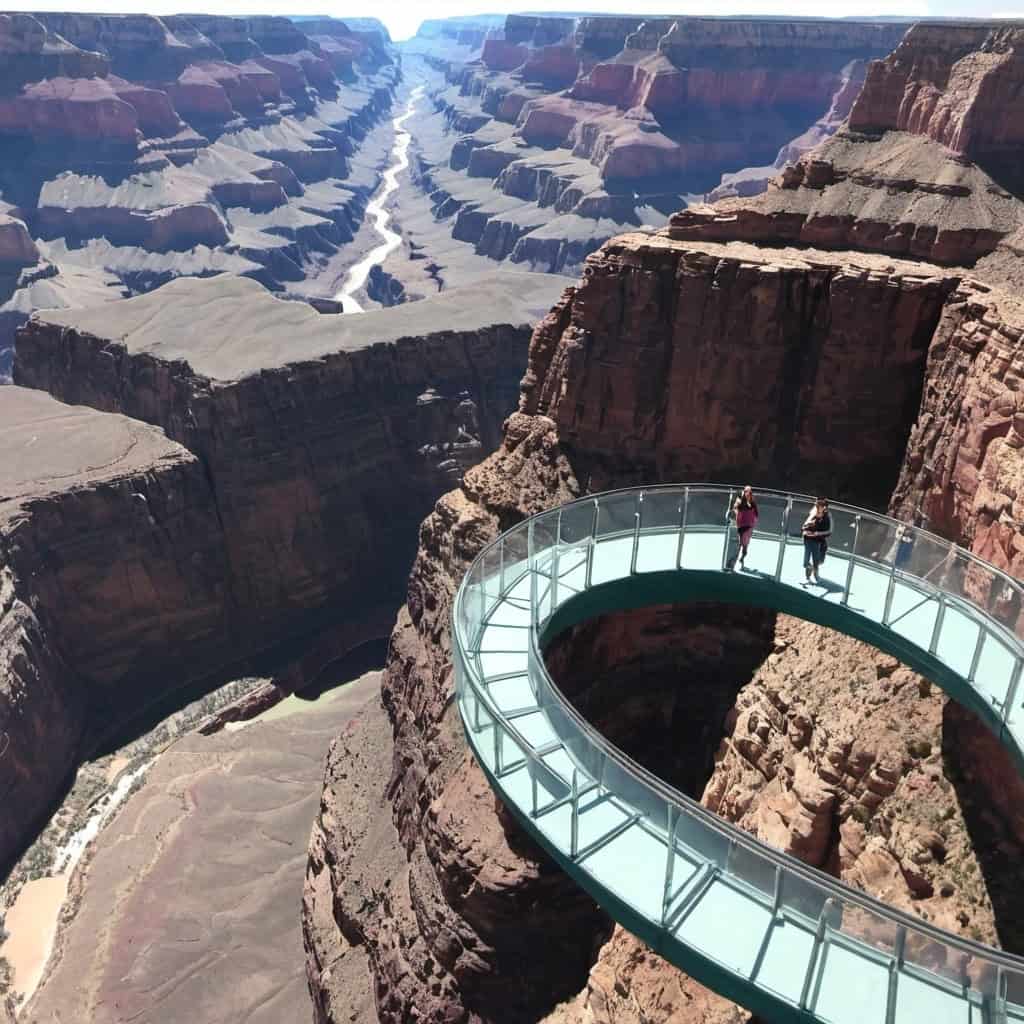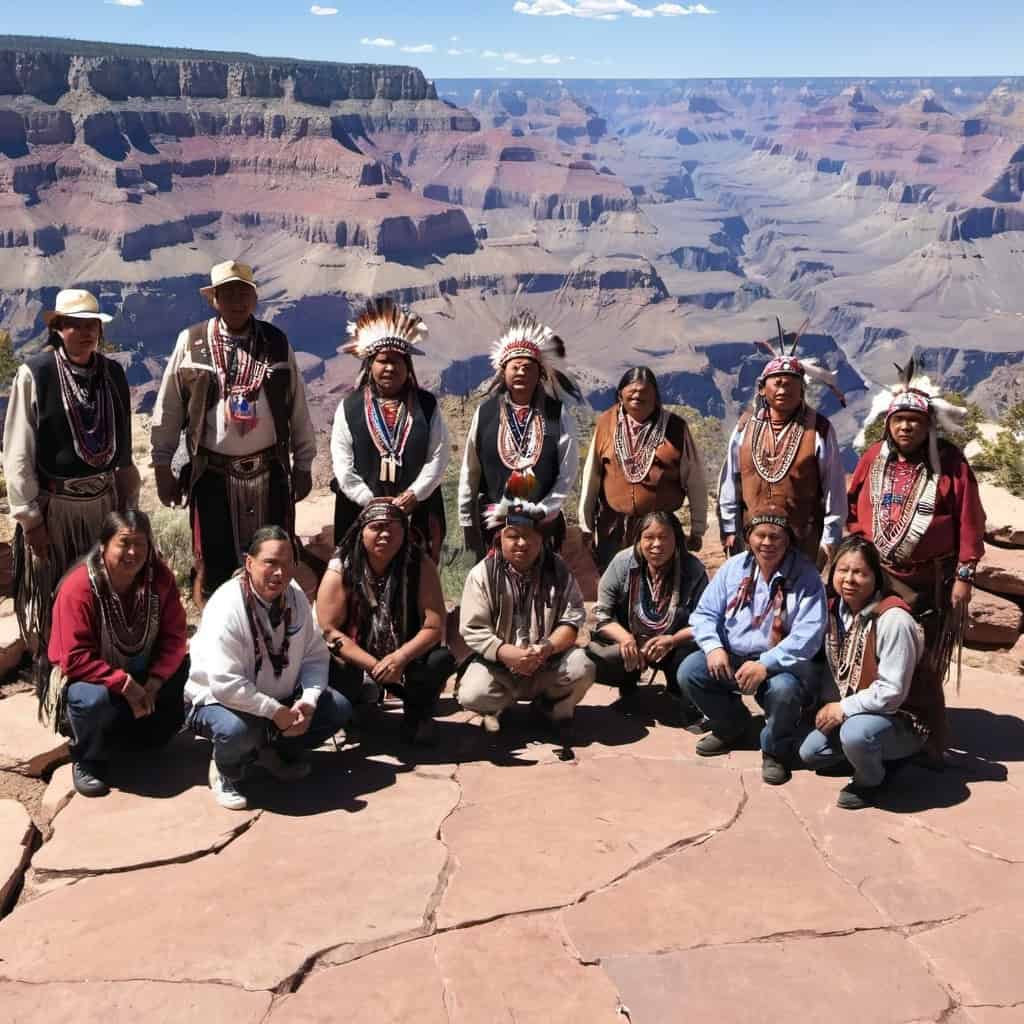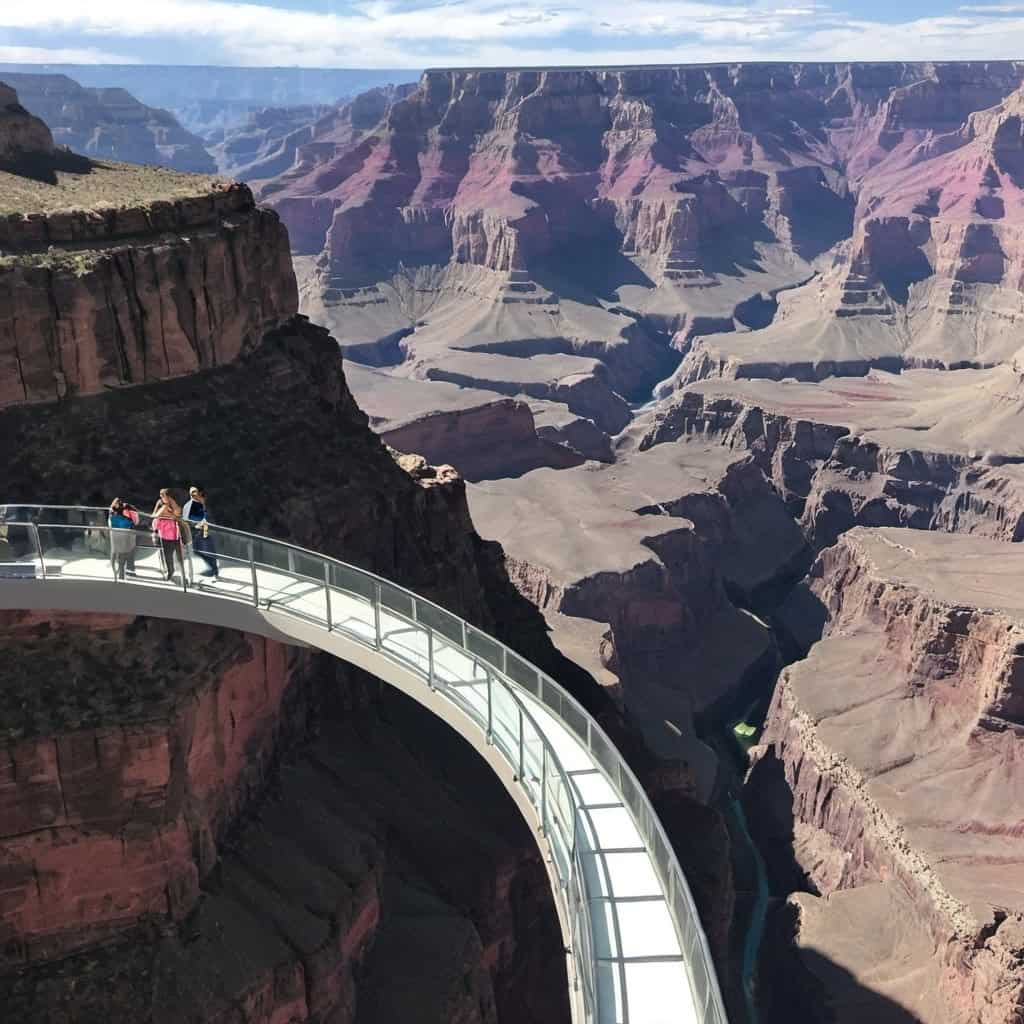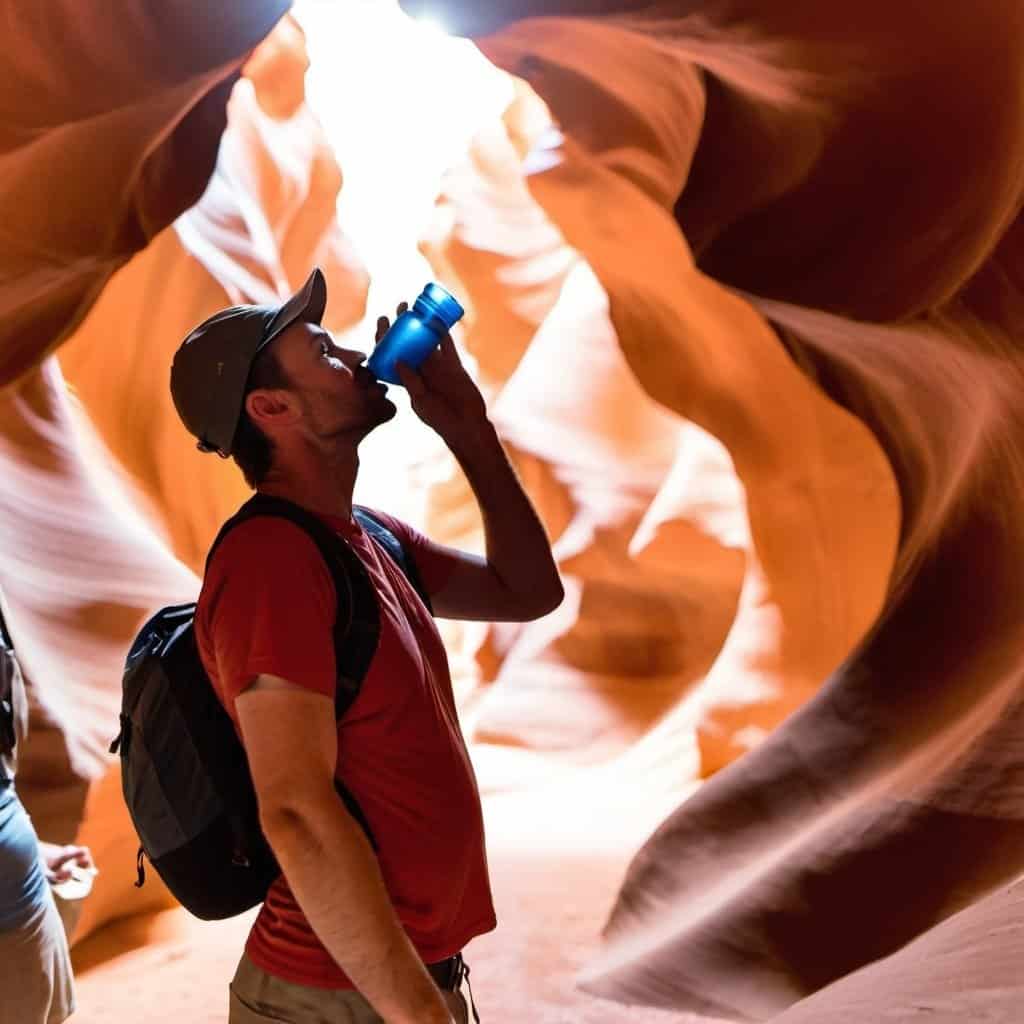Grand Canyon National Park, with over 4.7 million visitors in 2023, is one of the most visited natural landmarks in the world. Yet, many tourists miss out on an extraordinary opportunity to experience Native culture and history while simultaneously taking in one of the Seven Natural Wonders of the World.
Meet the Hualapai
At the southern boundary of Grand Canyon National Park lies the Hualapai Reservation (pronounced Wal-lah-pie), encompassing over 1 million acres and home to the Hualapai people for centuries. Hualapai translates to “People of the Tall Pines,” signifying the tribe’s deep connection to the Colorado River and the surrounding environment in Northern Arizona.
Culture and history that spans millennia
The Hualapai have traditionally lived in the mountainous region of what is now northwestern Arizona, extending to the Colorado River since at least 600 AD. They were semi-nomadic, adapting to the arid environment by hunting, gathering, and some agriculture. Their territory spanned approximately 5 million acres before European contact.
The arrival of Europeans, and later Americans, significantly impacted the Hualapai. In the mid-19th century, they faced near constant disruptions from settlers, miners, and military conflicts, which greatly accelerated when gold was discovered in 1863 in what is now Prescott Valley, Arizona.
In 1865, the Hualapai War erupted after drunken Americans killed Yavapai leader Anasa in April 1865. Joining forces with the Yavapai, the greatly outnumbered Hualapai fought hundreds of American soldiers during a campaign that lasted five years, when dysentery and other diseases ravaged the tribe and they could no longer continue. It is estimated that one-third of the Hualapai population was lost between 1865 and 1870.

In 1874, the United States military forcibly relocated hundreds of Hualapai to the Colorado River Indian Reservation in Parker, Arizona (called La Paz). Then, in 1883, President Chester A. Arthur signed an executive order establishing the Hualapai Reservation, providing a designated area for their community but also presenting challenges as they adapted to life confined to a smaller territory. Their land had been largely destroyed by the cattle of ranchers, while the Atlantic and Pacific Railroad completed tracks across Hualapai land.
In 1938, the Hualapai approved a constitution and established a governing council. They have since fought for and secured clear title to their reservation land, contributing to the development of principles that support indigenous land claims globally. Today, the tribe’s economy relies heavily on tourism, with additional income from cattle ranching, timber sales, and arts and crafts.
Modern Hualapai life and economy
Today, the Hualapai tribe has embraced tourism as an economic engine for their community, offering guests some truly extraordinary adventures. One of the most thrilling attractions is the Skywalk at Grand Canyon West, a cantilever glass bridge that extends 70 feet out over the rim of the Grand Canyon, providing breathtaking views 4,000 feet to the Canyon floor below. The Skywalk, a $30 million, 1.2 million-pound steel and glass structure, opened in 2007 and has become a significant source of revenue and employment for the tribe.
Owned and operated by the Hualapai Tribe, Grand Canyon West offers unparalleled panoramic views of the canyon’s west rim from hiking and biking trails, river rafting, a zip line, and the famous Skywalk. Grand Canyon West is not part of Grand Canyon National Park but sits on Hualapai Tribal lands—108 miles of which run along the western end of the Grand Canyon and Colorado River. This side of the canyon is more desert-like, with elevations that average 4,000 feet and remain warmer in the summer.

Visitors can explore the canyon from various perspectives. Hike or bike one of the many designated trails, or head to Hualapai Ranch for trail rides along the rim. Helicopter tours offer expansive views from above, while the Hualapai River Runners provide one-day white water adventures on the Colorado River. The reservation is headquartered in Peach Springs, Arizona, with a population of around 2,300 members. The tribe governs itself through a tribal council and maintains a range of services, including education, healthcare, and social services.
Preserving cultural heritage and traditions
The Hualapai take great pride in preserving their cultural heritage, celebrating traditional ceremonies, dances, and practices that reflect their deep connection to the land and their ancestors.
Language revitalization efforts are a priority, with programs aimed at teaching the Hualapai language to younger generations. Through initiatives like the American Indian Language Development Institute, the Hualapai continue to promote their history and culture. Their story is one of resilience, adaptation, and a deep connection to the land that sustains them.
The tribe has diversified their economy through various enterprises, including ranching, farming, and other business ventures. The Grand Canyon West tourism enterprise, including the Skywalk, is one of the most notable sources of revenue and employment for the tribe.
Despite these advancements, the Hualapai face ongoing challenges, including issues related to water rights, economic development, and maintaining cultural identity in a rapidly changing world. They continue to advocate for their rights and work towards sustainable development that honors their traditions and values.
The incredible Hualapai experience
The Hualapai Reservation consists of nearly one million acres in a portion of the Grand Canyon about 50 miles west of the Grand Canyon Village. Much of the reservation is accessible only by dusty, bumpy, unpaved roads, apart from those leading to Peach Springs and the tourist facilities at Grand Canyon West.
Without a doubt, visiting the Hualapai Reservation offers an unforgettable Indigenous experience at the Grand Canyon, providing a unique blend of natural beauty, thrilling adventures, and rich cultural heritage. Whether walking the Skywalk, rafting the Colorado River, or learning about the tribe’s history and traditions, visitors are sure to gain a deeper appreciation for the Hualapai and their enduring spirit.




